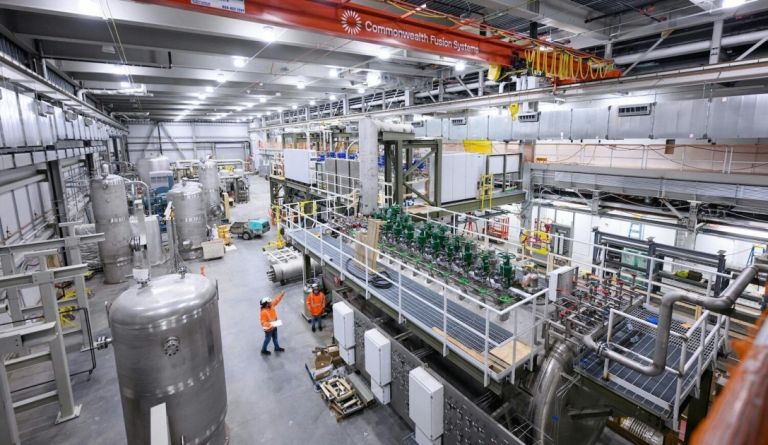
Despite decades of research and billions of dollars in funding, fusion energy remains on the extremely early end of the technology-development curve. Yet a handful of recent engineering breakthroughs are giving fusion scientists and their deep-pocketed investors fresh hope that commercial fusion power could finally come to fruition.
Other startups such as Avalanche Energy, General Fusion, Helion Energy, TAE Technologies, Xcimer Energy, and Zap Energy have also raised jaw-dropping funding rounds in recent years from billionaires and investment funds. The Fusion Industry Association lists more than 50 companies working in the field, which together raised $2.64 billion in private and public funding in the past year — nearly three times more than in the previous year.
This growing fleet of fusion startups is pursuing a variety of technologies, such as systems using mighty laser beams or extremely high voltages. CFS is taking a magnetic approach.
At its site in Devens, Massachusetts, CFS is building a donut-shaped device called a tokamak that uses high-temperature superconducting magnets to contain and stabilize plasma during the nuclear reaction. The startup said it aims to have its SPARC reactor running by 2026 and to achieve another crucial milestone the following year: producing more energy in its reactor than is needed to power the machine.
CFS is also advancing its plans to build the world’s first grid-scale fusion power plant in Chesterfield County, Virginia, with the goal of putting power on the grid in the early 2030s. In June, Google agreed to buy half of the carbon-free electricity produced at the facility, which will go on a site owned by the utility Dominion Energy. Last week, Chesterfield County’s planning commission unanimously approved a conditional use permit for the 400-megawatt plant.
“We’re excited to make this longer-term bet on a technology with transformative potential to meet the world’s future energy demand, and support CFS in their efforts to reach the scientific and engineering milestones needed to get there,” Michael Terrell, head of advanced energy at Google, said in a June 30 press release.
Now all that’s left for CFS to do is prove its technology can work as promised.
Great Job Maria Gallucci & the Team @ Canary Media Source link for sharing this story.